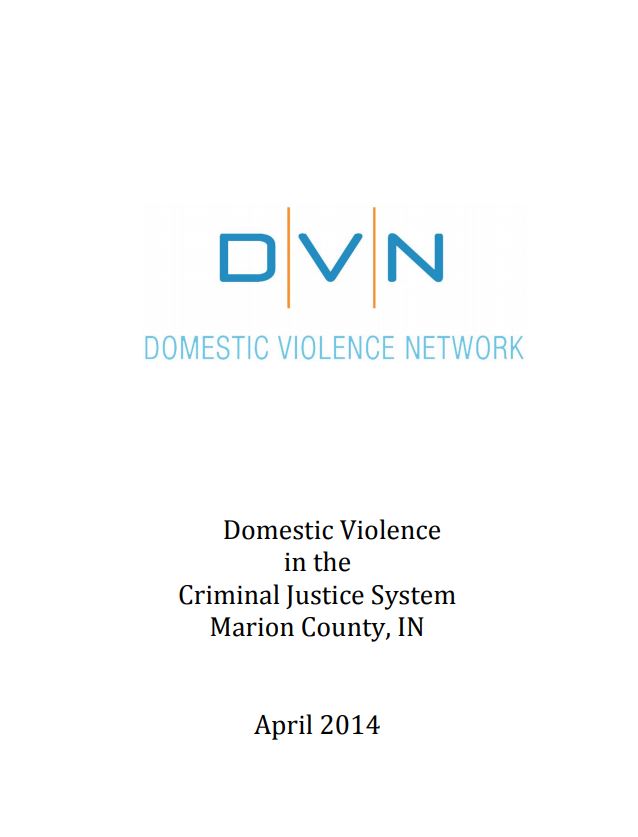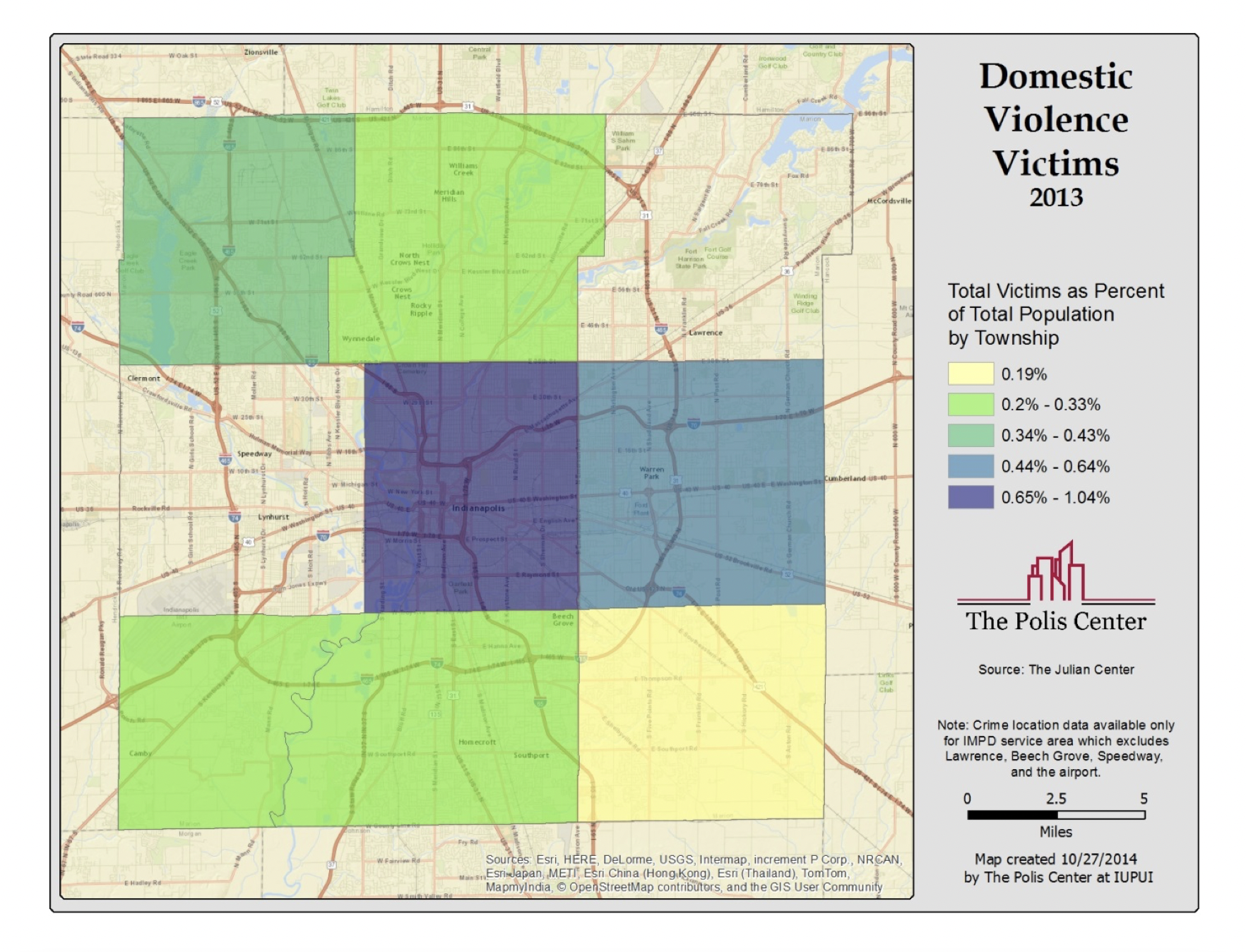Given the recent high-profile domestic violence cases in the news this month, it is very timely to recognize the importance of organizations like the Domestic Violence Network that work to end domestic violence through education and advocacy. To that end, The Polis Center recently partnered with Domestic Violence Network (DVN) to analyze data from the criminal justice system to gain a better understanding of the state of domestic violence in the county. DVN released the report today. Below are a few highlights of the findings from this report. I focus on demographics of victims and perpetrators here, but the report provides data on many other aspects of domestic violence.
1. In 2011, there were an estimated 10,687 victims of domestic violence (1.5% of the population) and 9,962 perpetrators involved in the criminal justice system.
It is important to note this is not a complete count of domestic violence victims; it is a count based only on data about those that are involved in the criminal justice system – an important distinction. Preliminary data suggests the 2012 counts will be closer to the 2010 numbers (13,748 victims and 10,605 perpetrators).
2. Victims are predominantly females aged 20 to 24, and victims are predominantly males aged 25 to 29.
The age pyramids below shows the number of males verses females in each 5-year age increment. Compared to the age and gender distribution of victims and perpetrators for the county, the population involved in domestic violence is much younger. 79% of victims are females, and 80% of perpetrators are males.
3. African Americans are disproportionately represented among domestic violence victims and perpetrators.
African Americans make up 27% of the general population but 45% of domestic violence victims and 47% of perpetrators. Caucasians make up 63% of the general population but only 51% of domestic violence victims and 44% of perpetrators. The charts below compare the racial composition of domestic violence victims and perpetrators to the racial composition of the general population.
4. Domestic violence rates are highest in Center, Wayne, and Decatur Townships – and in low-income neighborhoods.
Using SAVI, we created at a more detailed map showing that low-income neighborhoods have a higher reported incidence of domestic violence than middle- and upper-income areas. The red areas on the map below highlight the low-income census tracts. The tracts with the darker shades of blue are areas with higher domestic violence rates, which closely align with the low-income areas.

5. There is so much more in the report about domestic violence in Marion County.
Here’s what else you can learn from the report:
- How has domestic violence changed over time?
- What are the legal outcomes of domestic violence cases – such as how many cases result in charges and how many cases are dismissed?
- How many charges against perpetrators are felonies vs. misdemeanors?
- How many people are filing for protective orders and what are their demographics?
- Have domestic violence perpetrators been convicted of other crimes?
- How many victims, perpetrators, and victim-perpetrator pairs have been involved in repeat incidents of domestic violence?
You can access the full report here. Data Sources: The analysis looks at victims and perpetrators across four data sources: The Julian Center, Indianapolis Metropolitan Police Department (IMPD), Marion County Prosecutor’s Office, and Indiana Supreme Court.




